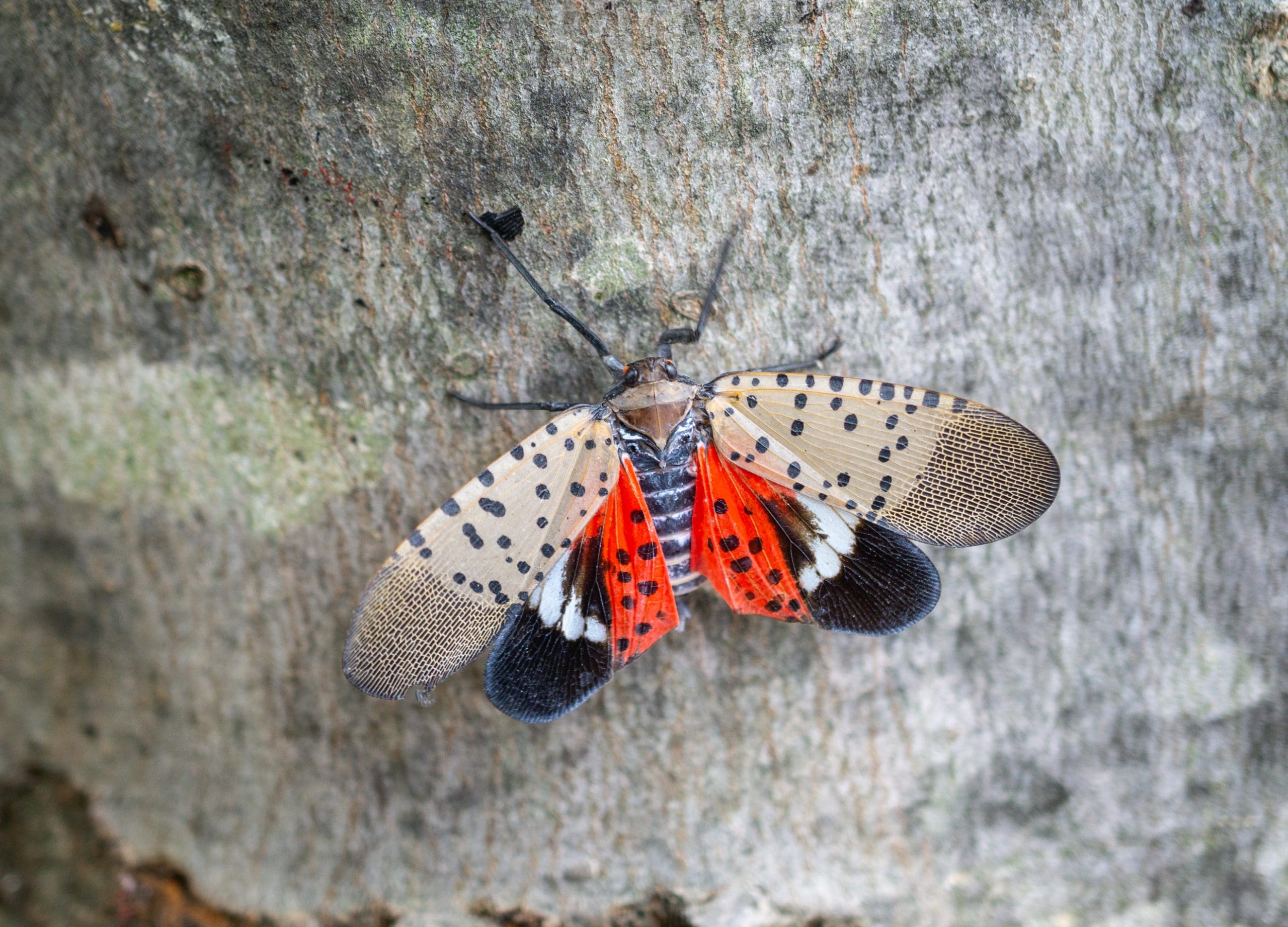
Since being detected in Pennsylvania in 2014, the spotted lanternfly (SLF) has spread throughout Northeastern and Mid-Atlantic states.
Currently, SLF distribution includes Pennsylvania, Maryland, Virginia, West Virginia, New York, Delaware, New Jersey, Connecticut, Rhode Island, Massachusetts, North Carolina, Ohio, Michigan, and Indiana. You can view this county-based map for the most up-to-date record of where SLF have been reported. Some counties may only have a small portion that is currently affected.
While this invasive insect does not bite or sting, they feed voraciously on plant sap and excrete honeydew, which attracts other insects and encourages black sooty mold growth. Their feeding stresses plants and can contribute to the long-term weakening of established plants and trees.
SLF feed on a number of fruit, ornamental and woody trees, including apple, peach, cherry, pine, oak, maple, and sycamore trees. Their preferred host tree is the tree of heaven (Ailanthus altissima), an invasive tree native to China and Taiwan.
Identifying Spotted Lanternfly
There is one generation of SLF per year. The eggs are laid in the fall, typically from September to November, and hatch in the spring (late April to June).
The egg masses are laid on a number of surfaces like trees, decks, rocks, and outdoor equipment and are protected with a mud-like covering. Each egg mass has 30 to 50 eggs, and they are laid in vertical columns.
SLF goes through four nymphal stages. In the first stage, they are small and can be mistaken for ticks or spiders. The second and third instars double in size and are black with white spots. They become red with white dots and black stripes at the fourth instar. They are roughly ½ inch long at the fourth instar.
Adult SLF begin to emerge in July and are active until hard freezes kill them. The adults have black one-inch bodies, gray forewings with black spots and hindwings that are red, black and white. Only adults can fly, but when they are at rest, they can blend in well with their environment.
Control Methods
Egg masses that can be reached should be scraped from the surface and then smashed or placed in a container of rubbing alcohol. Many of the states where SLF populations are strong have quarantines in place. Regularly check methods of transport, plant material and equipment for these egg masses, as this is how the invasive insect spreads to new regions.
If you find a spotted lanternfly outside of a quarantine area, take a picture of it and its location to report to your State Department of Agriculture before killing it.
Another control method is removing the SLF’s preferred host tree, the tree of heaven. These trees can also be used as a trap tree to treat with insecticide to kill SLF as they feed.
Because SLF is seen as a nuisance insect, take into account the number of SLF present, whether they are on a preferred host plant, the health of the plant, and the life stage of the SLF before deciding to use an insecticide to kill them.
Insecticidal soaps, neem, botanical oils and pyrethrum are reduced-toxicity chemical control options. If the SLF population size and plant vulnerability warrant it, systemic applications of dinotefuran, bifenthrin, beta-cyfluthrin or imidacloprid offer longer residual control.
Trunk injections provide the most accurate dosing of a tree with limited impact on the environment. Soil drenches can be performed from July to September to target adults.
In newly infested areas, SLF populations tend to increase steadily over several seasons, and preferred individual host plants tend to remain consistently favored from year to year. However, population numbers can drastically drop or rebound from season to season. Population density, host fitness, natural enemies, and weather conditions are believed to play a role in these fluctuations, so the appropriate response will vary from year to year.

